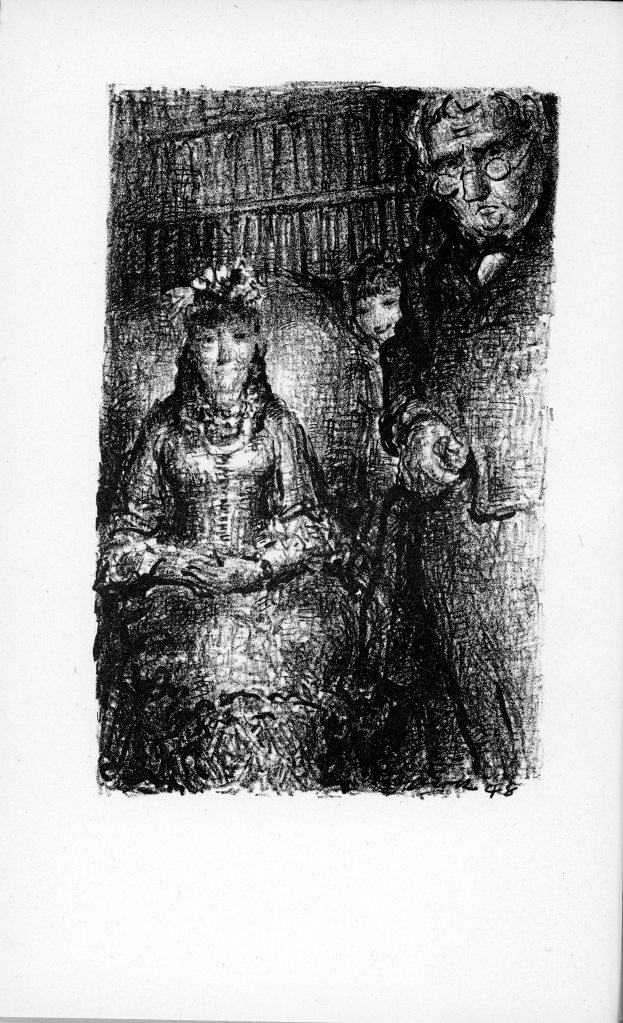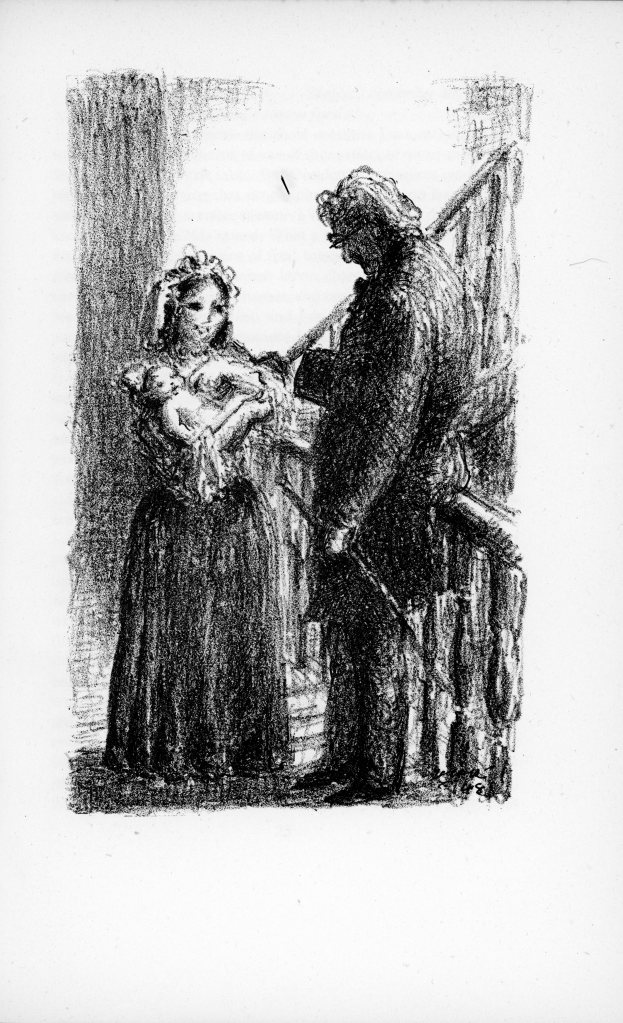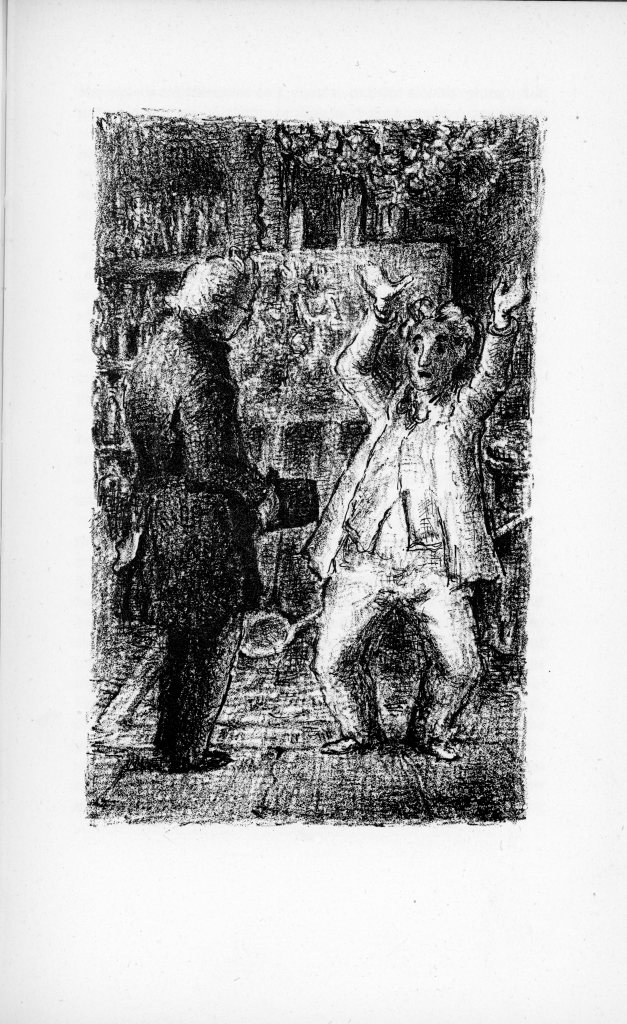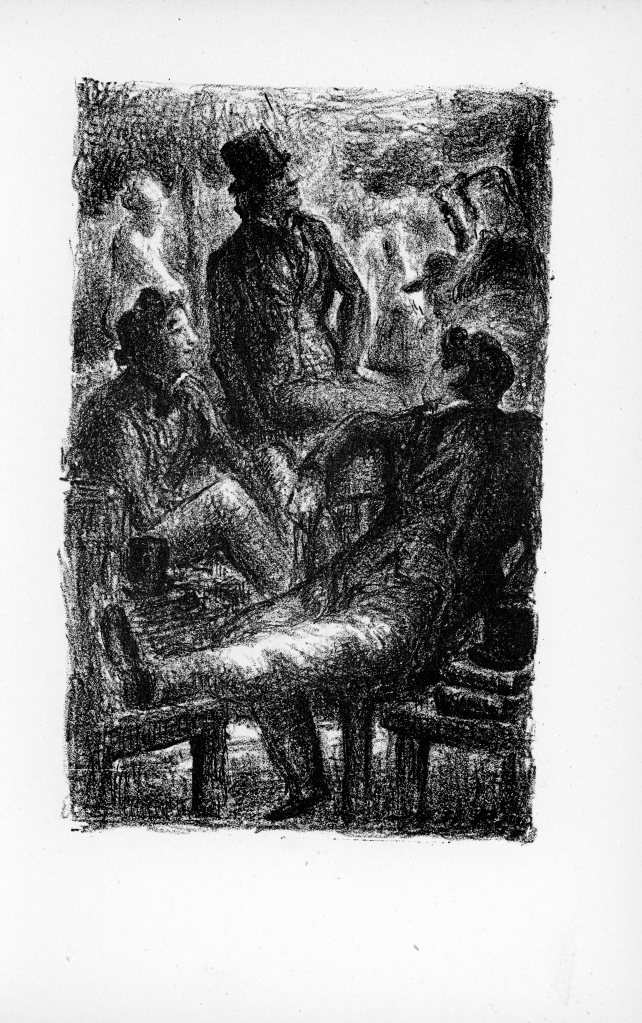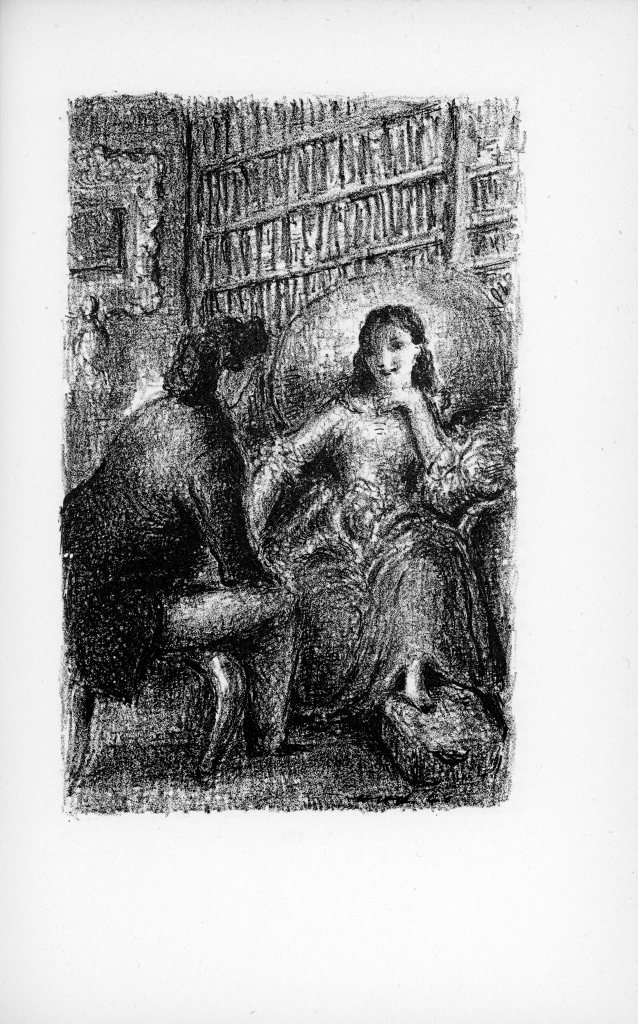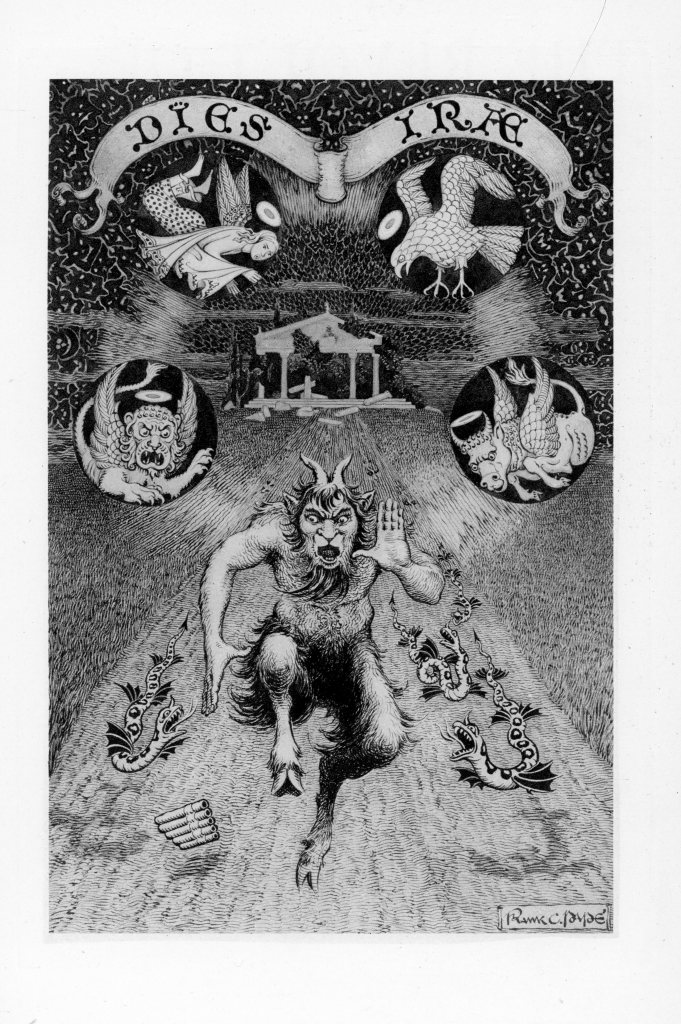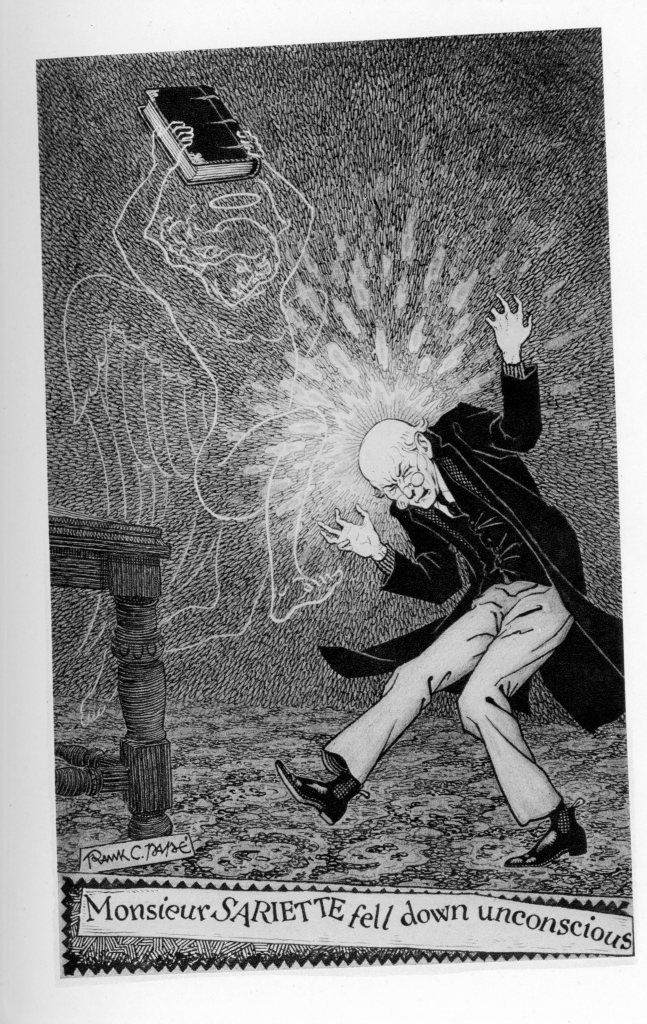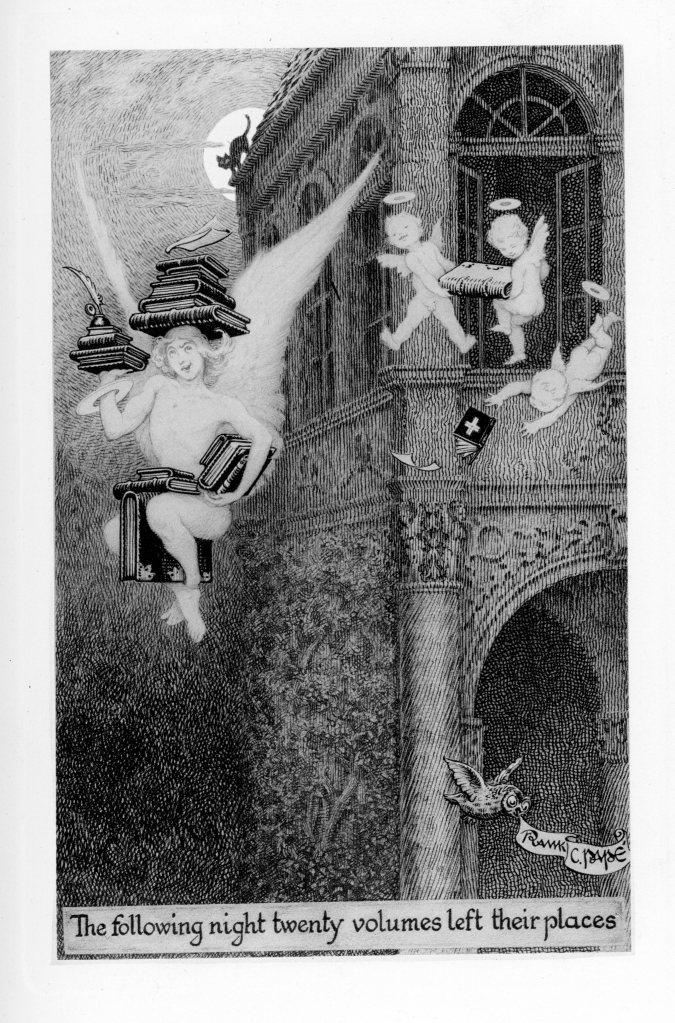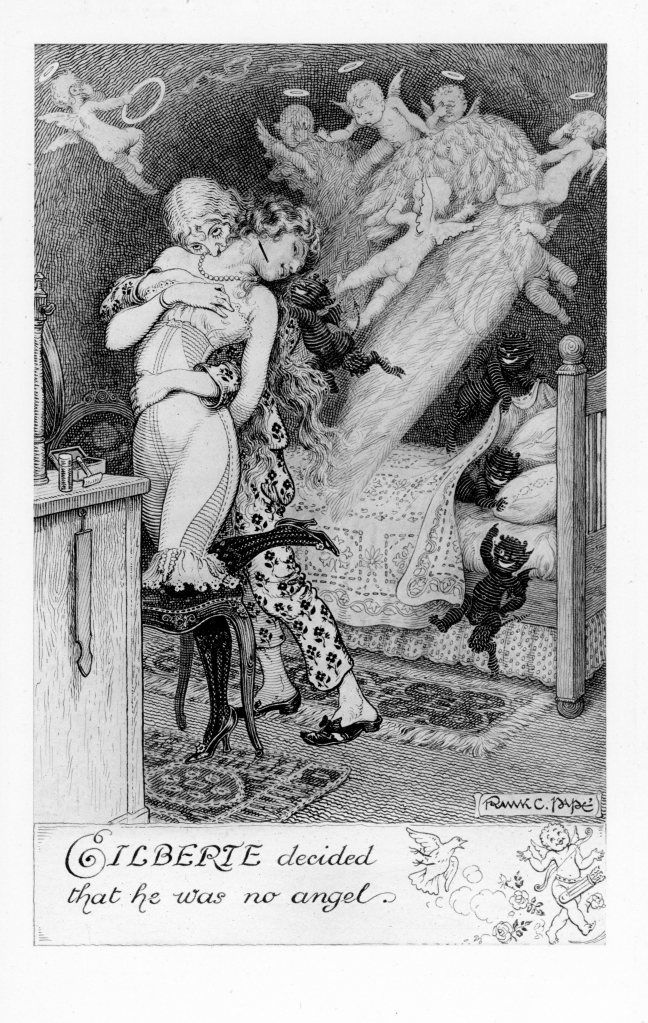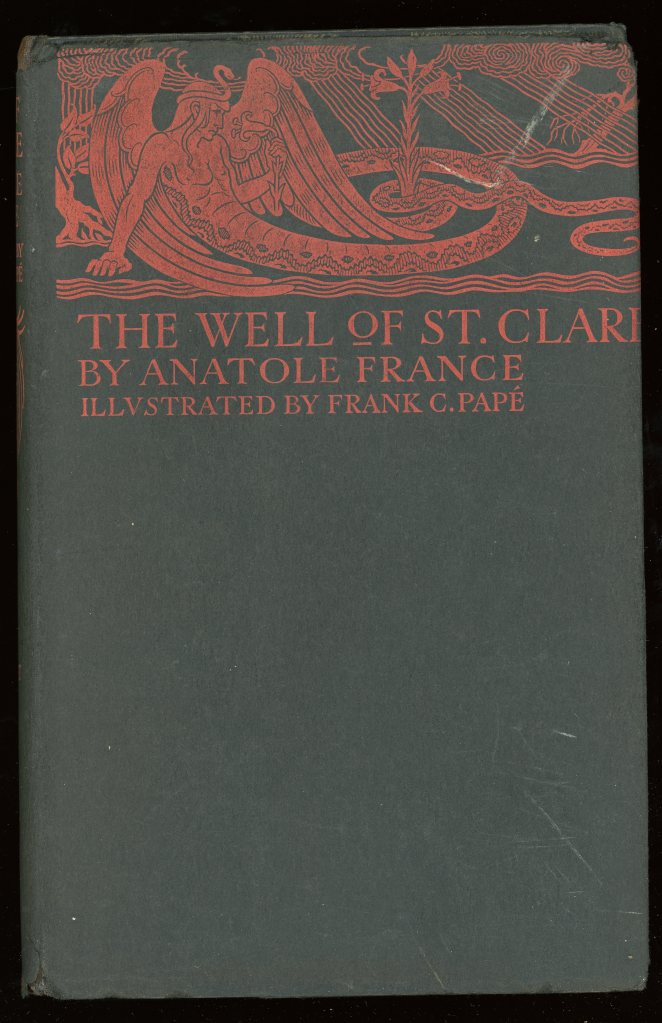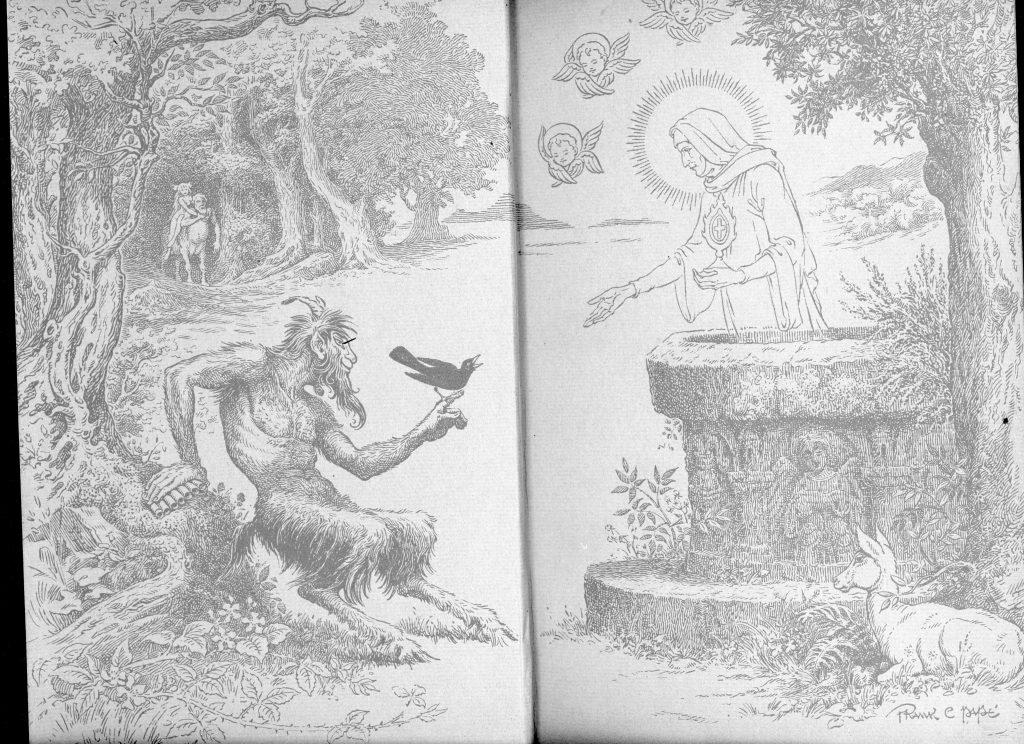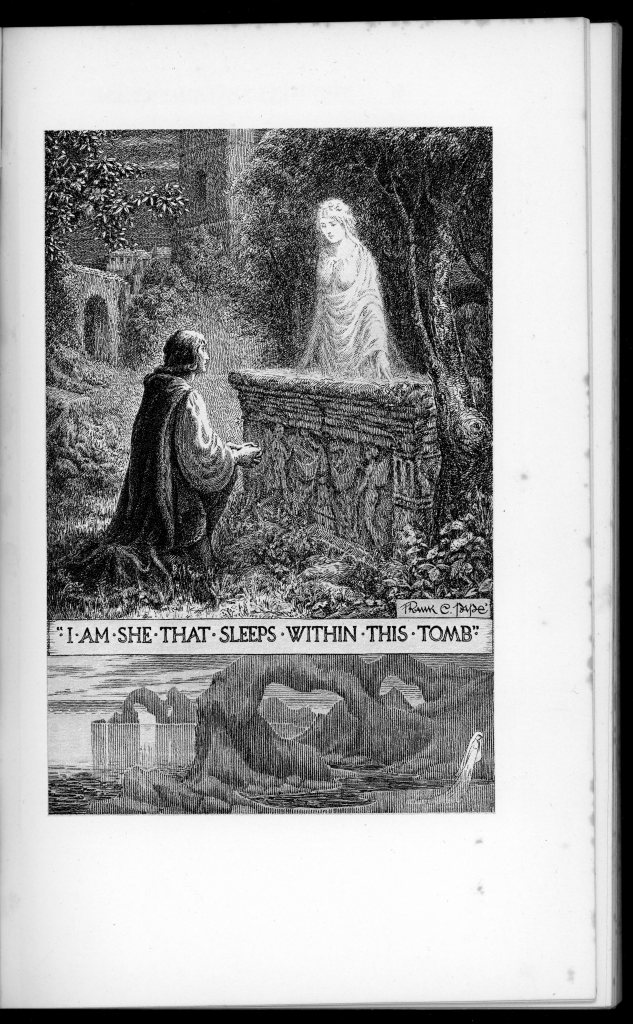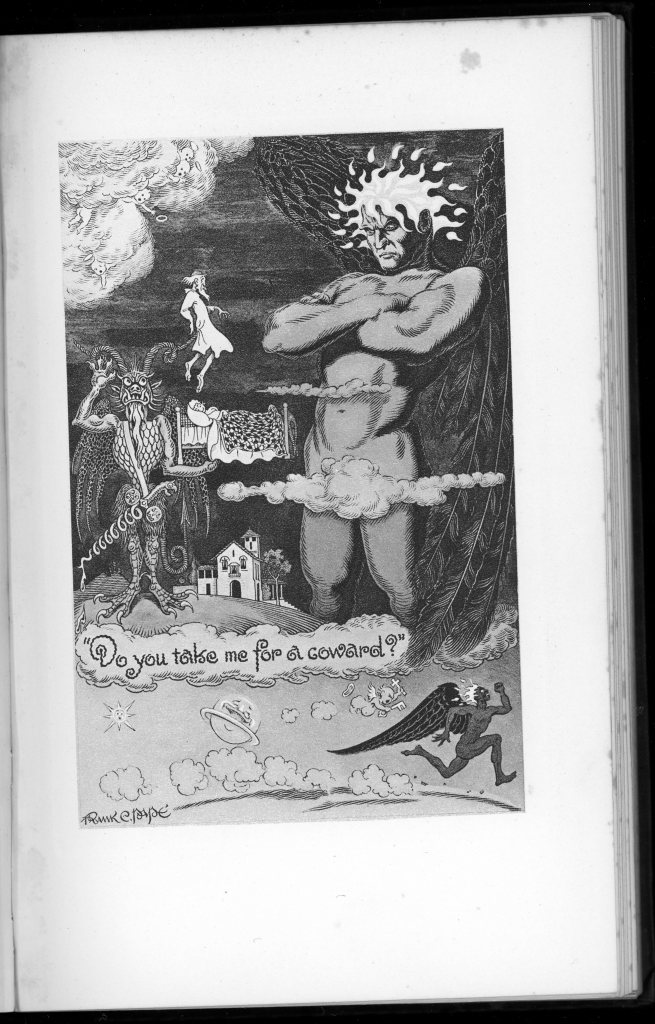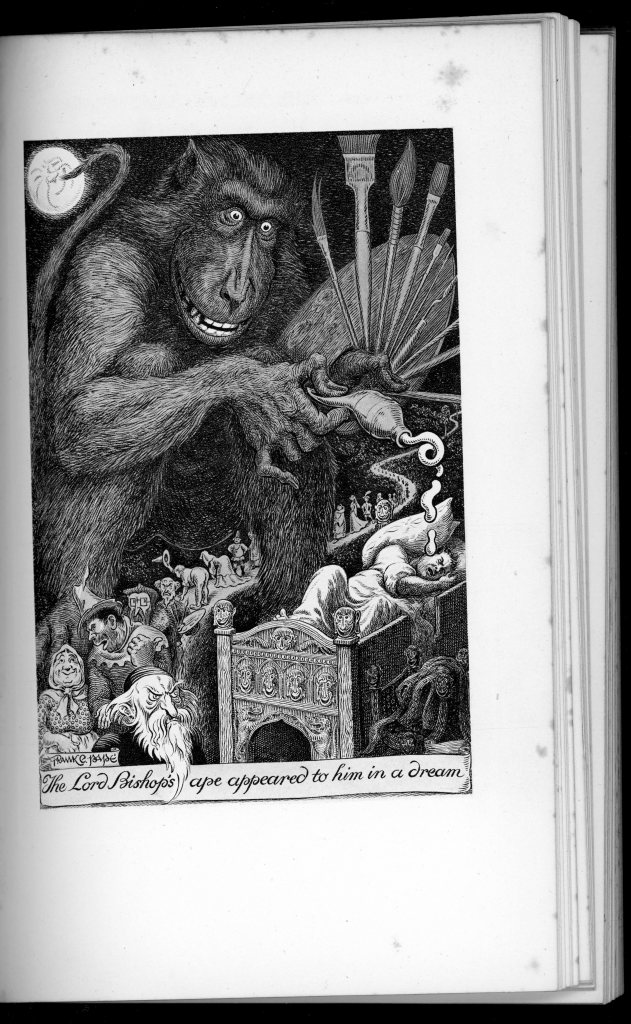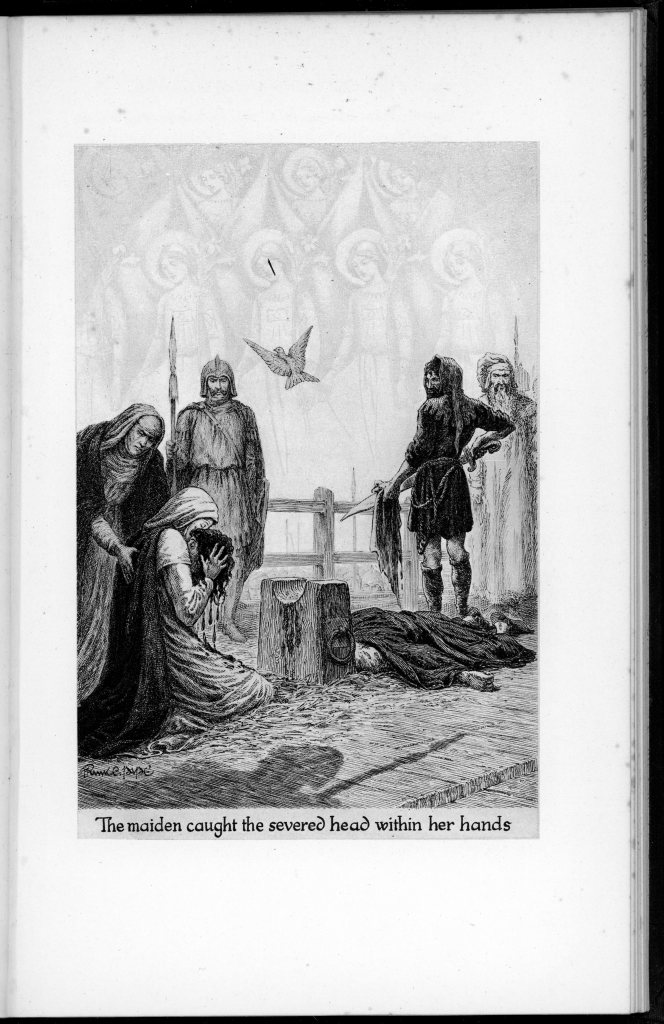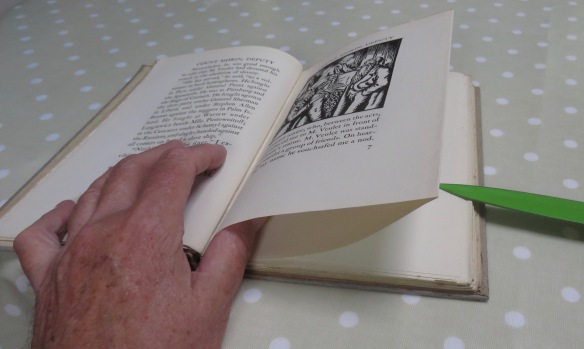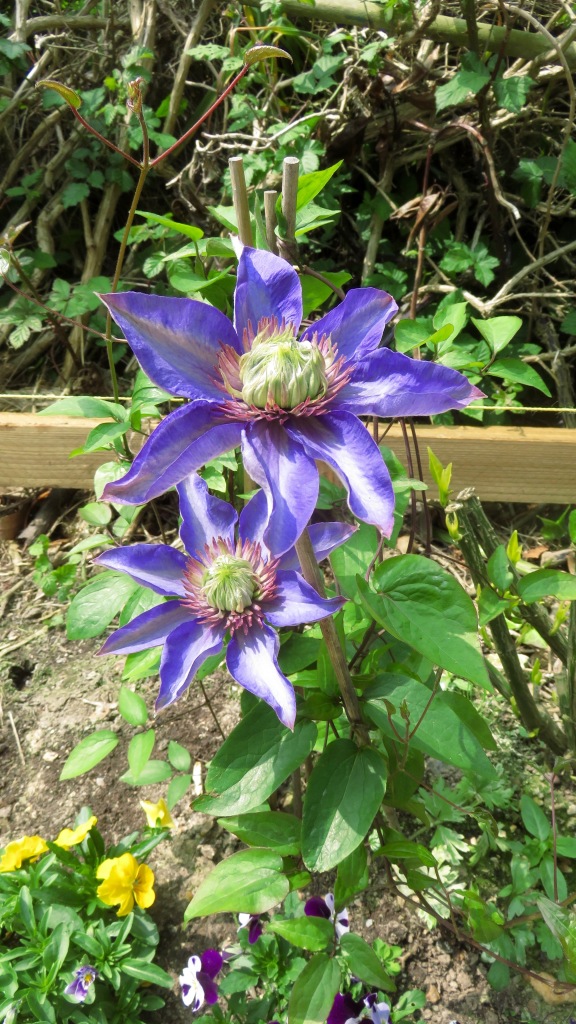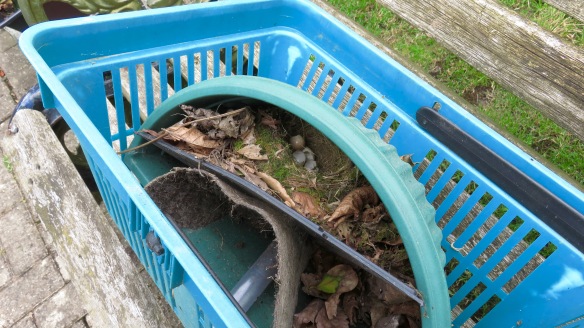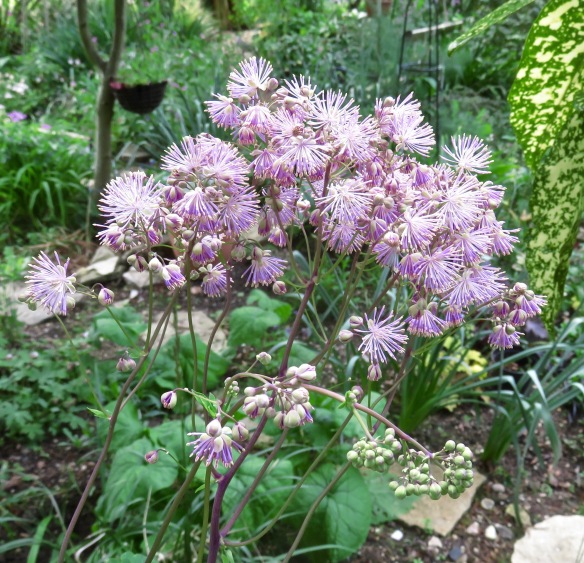
The book I finished reading yesterday once, according to the bookplate it bears, graced the shelves of Geoffrey P. Shakerley. Was this Colonel Sir Geoffrey Peter Shakerley (1906–1982), Chairman of Gloucestershire County Council (1956–1967) ? I wonder. And was he the first owner?
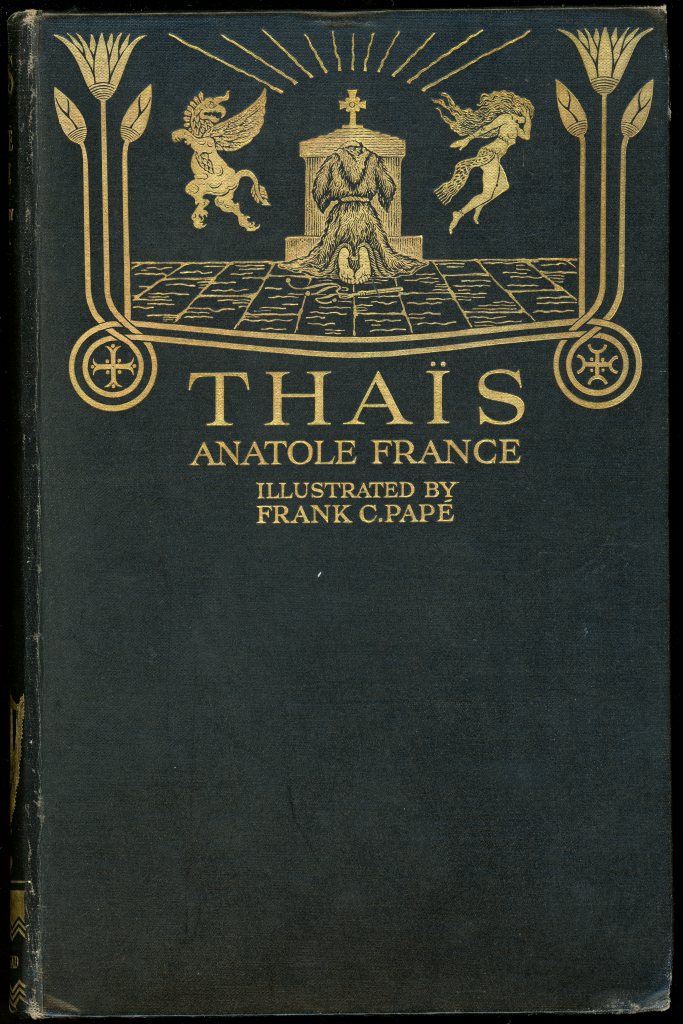
Here is the gold-embossed front board of another beautiful volume in the Bodley Head collection of the works of this author and illustrator.
I rarely read a book twice, but the tell-tale train ticket slipped inside suggests that I first read this one in June 1996, and was not deterred from enjoying it again. First published in 1890, this is the first illustrated edition of 1926.
Undoubtedly rich in satire from M. France, this is nevertheless a treatise on the trials and tribulations on the road to spiritual redemption. St Thais of Egypt, a libertine said to have lived in the 4th century A.D. and converted to early Christianity by a monk wracked with thoughts of lust for her. The writer, within this story, weaves struggles with conscience and much philosophical debate. His effortless prose has been well translated by Robert B. Douglas.

As usual, Papé’s superb draftsmanship is represented by endpapers;
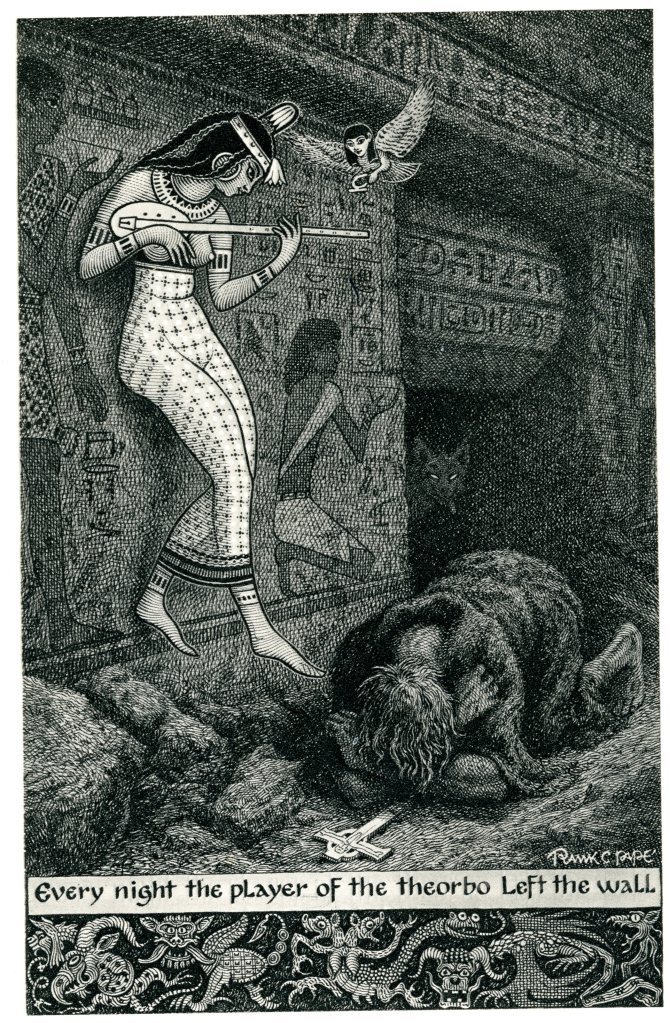

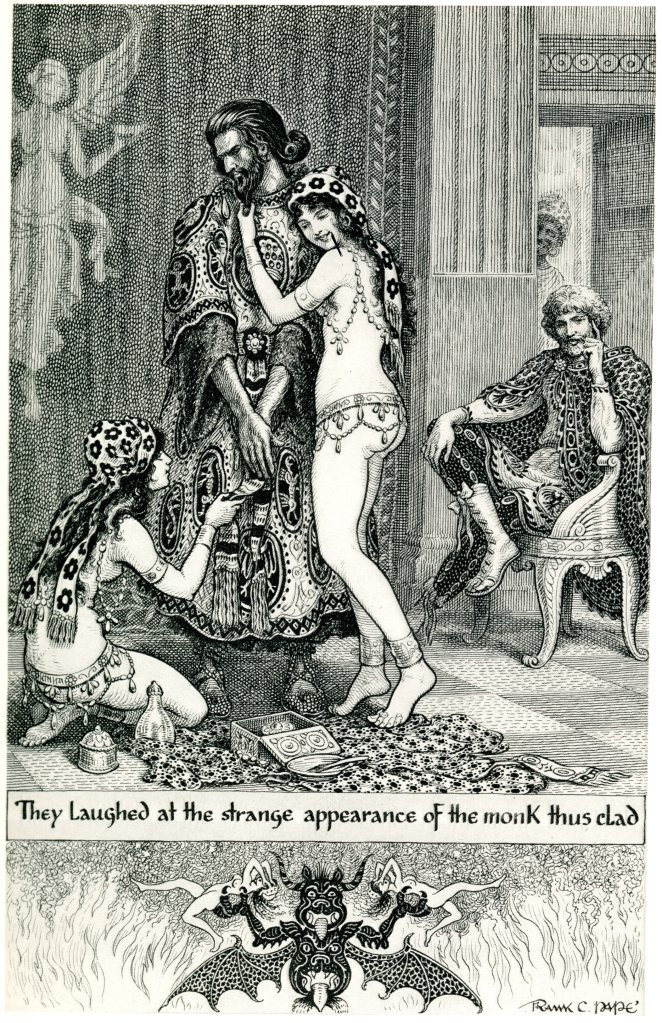


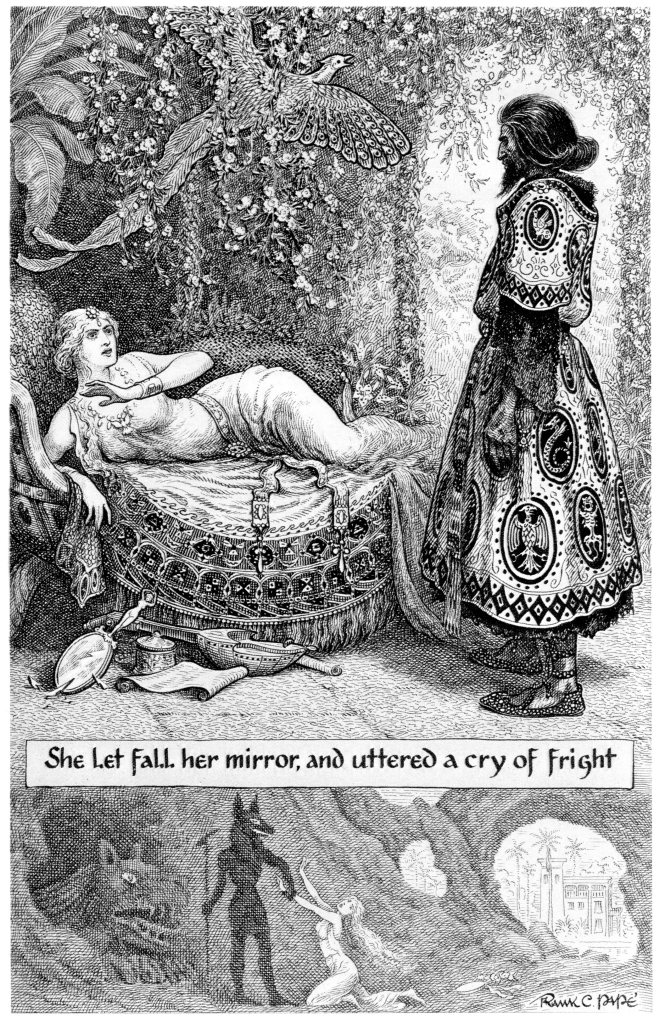
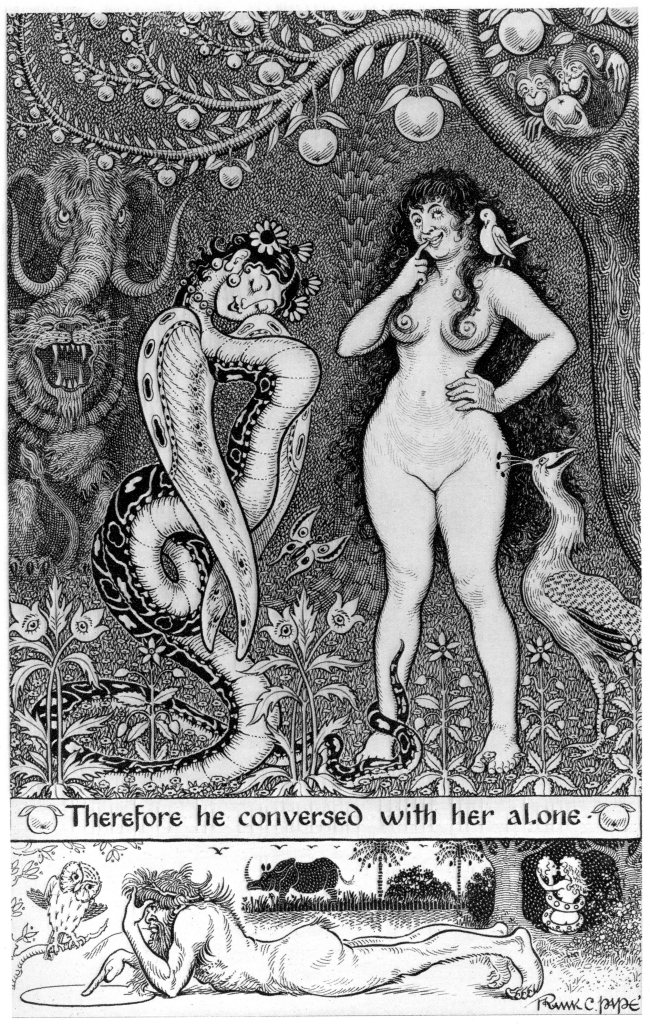

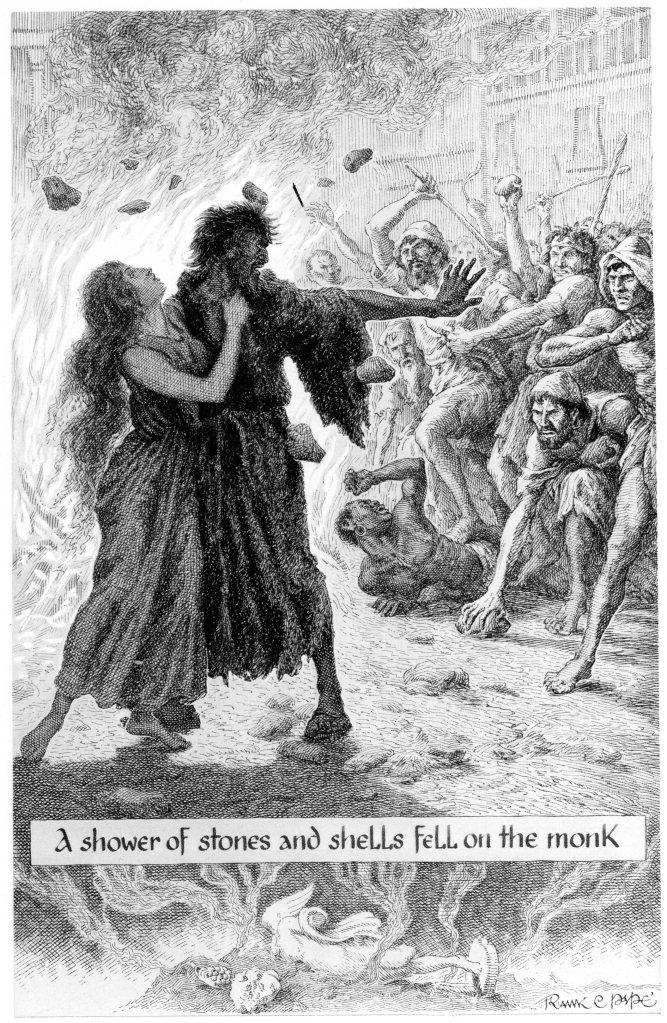



by twelve full page plates;

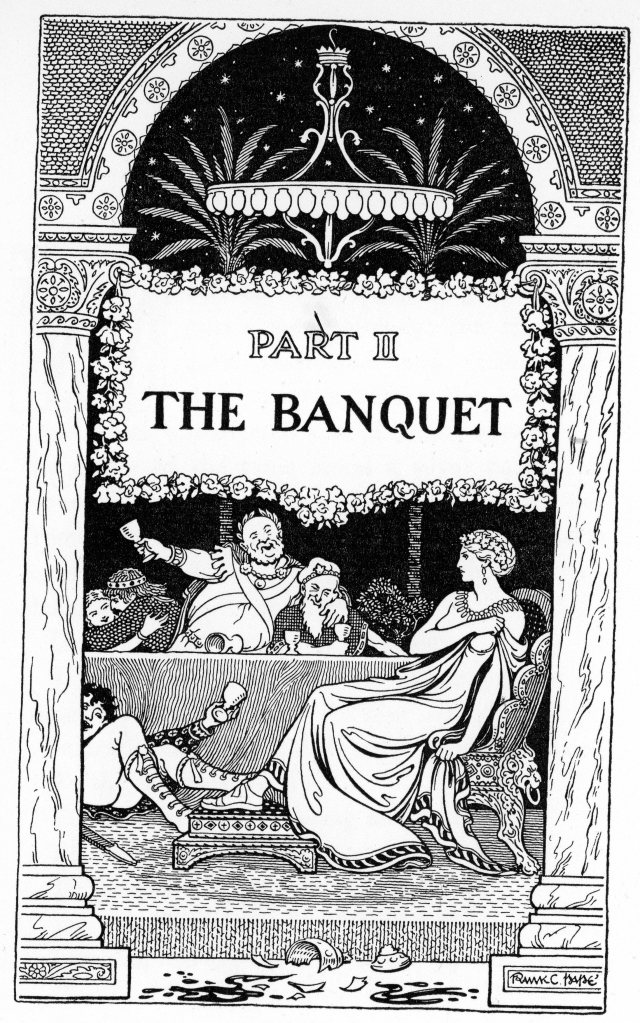
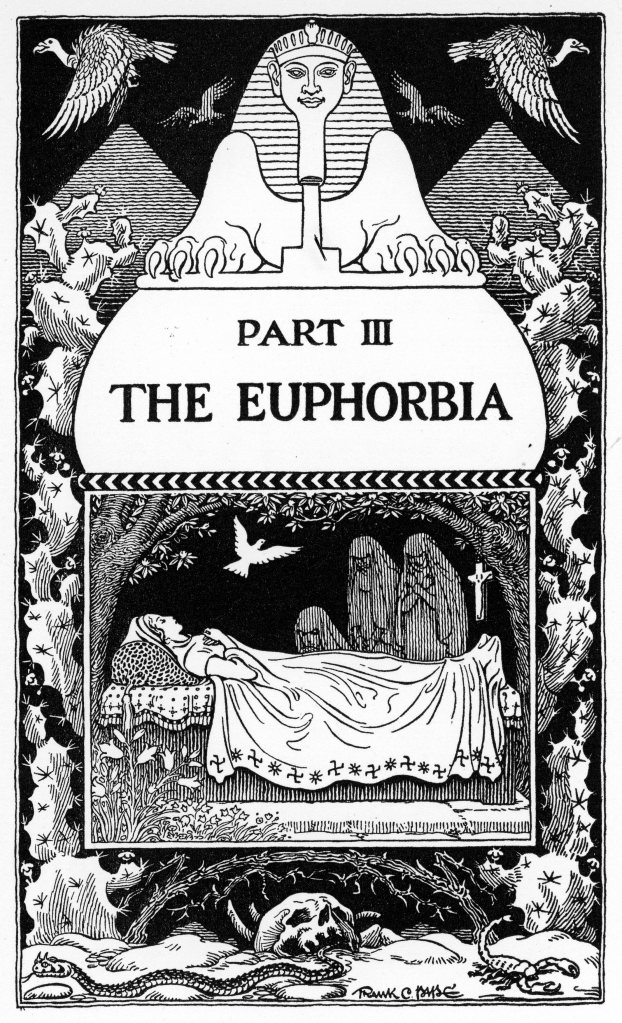
by introductory section headings;

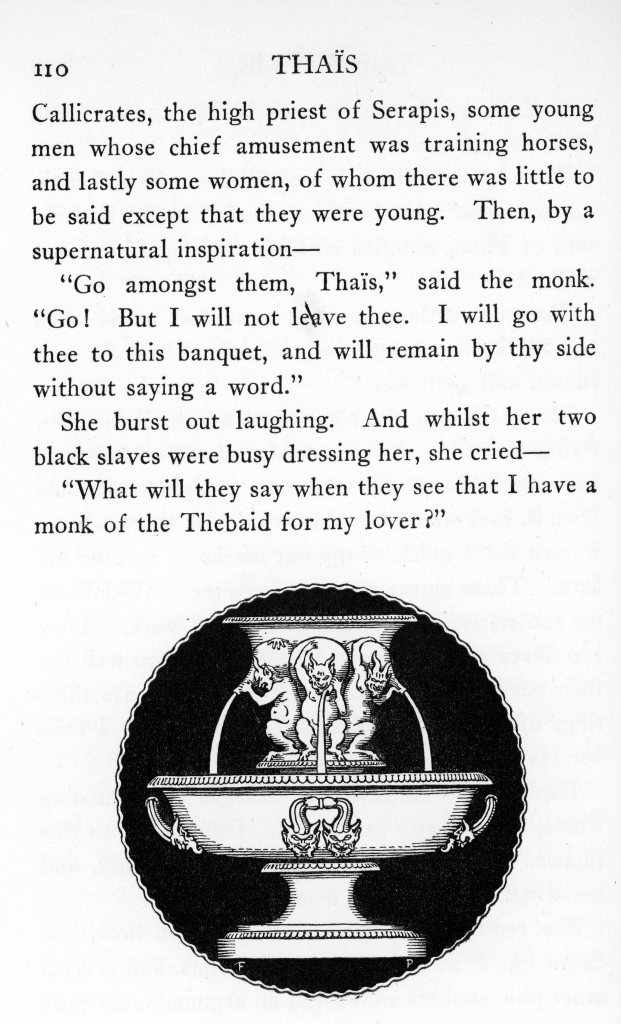
and by end pieces, from each of which I offer a selection.
Jules Massanet’s eponymous opera was based on Anatole France’s book.
Here is the final scene including the Renée Fleming duet with Thomas Hampson (10.29 minutes)
This evening we dined on Hordle Chinese Take Away’s excellent fare.
